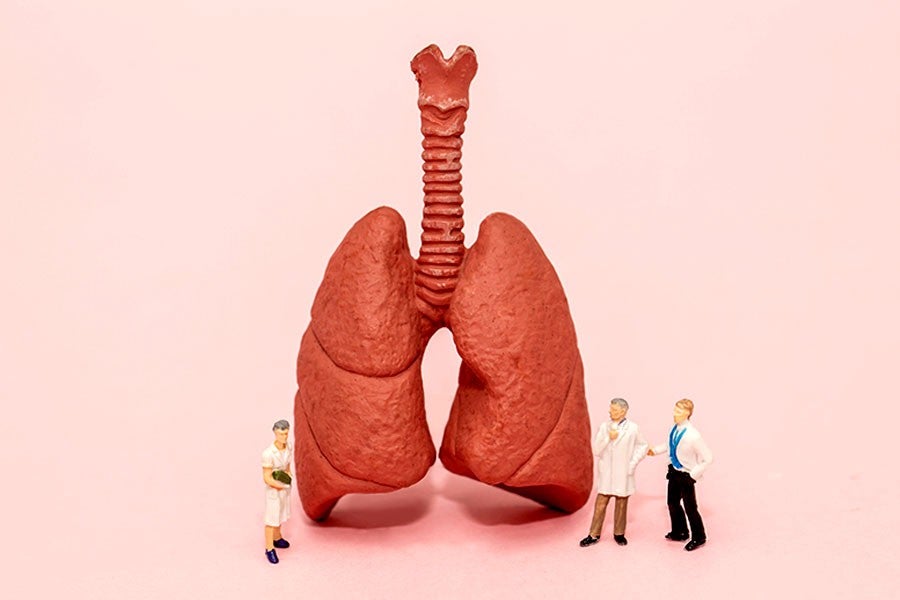Ruh-roh: Research published this week reveals that city dwellers are regularly inhaling antibiotic resistance genes (ARGs). What does this actually mean for you, a regular guy who breathes air? It means that your once easily-treatable infections may acquire the ability to survive antibiotic treatment — and eventually evolve into superbugs, like this unfortunate man’s case of super gonorrhea — just from the air you breathe. Woo!
Don’t feel too smug, yokels: The researchers also warn that these ARGs may soon make their way into rural areas. “Due to aerial transport, remote regions even without using antibiotics could be exposed to the ‘second hand’ ARGs, which are initially being developed in other regions but transported elsewhere,” say the researchers. Major contributors to this spread of ARGs include animal husbandries, wastewater treatment plants and hospitals.
But ARGs aren’t the only hidden dangers floating in the air we breathe. According to Bill Magavern, policy director at the Coalition for Clean Air, there are far too many air pollutants to cover in any single article, but he emphasizes that smog and particulate matter are the two main killers.
The primary component of smog is a chemical called ozone, which is produced when sunlight reacts with vehicle (and industrial) emissions. Inhaling even low levels of ozone can have potentially disastrous health effects, including irritation and inflammation of the lower airways, reduced lung function, exacerbation of asthma and other chronic respiratory diseases, in addition to increased susceptibility to respiratory infections. In 2010, long-term exposure to ozone air pollution contributed to approximately one million premature respiratory deaths globally, according to a study published in Environmental Health Perspectives.
Particulate matter, meanwhile, is a term used to describe small particles in the air that can be made up of various components, including nitrates, sulphates, metals, dust, soil, organic chemicals and even allergens (like bits of pollen or mold spores). Particulate matter primarily derives from vehicle and industrial emissions, construction and demolition as well as road dust. (Bushfires and dust storms can also swiftly increase concentrations of particulate matter in the air.)
Similar to ozone, long-term exposure to particulate matter can cause an array of damaging health effects, including reduced lung function, the development of cardiovascular and respiratory diseases, increased rate of disease progression and reduction in life expectancy. Even short-term exposure to particulate matter can worsen symptoms of asthma and other lung diseases; increase heart attack risk in people with heart disease; and increase premature death due to complications involving respiratory and cardiovascular diseases. In 2007, 3.45 million premature deaths worldwide were caused by fine particulate matter, according to a study published in Nature.
Ready for the good news? Oh wait, there isn’t any: Fixing this pollution problem is bastard hard. “Smog and particulate matter are the two air pollutants that the South Coast Air Quality Management District and the California Air Resources Board are most trying to address, particularly through reducing vehicle emissions, because those are the biggest sources of both smog and particulate matter — especially diesel vehicles, like trucks, ships and locomotives,” Magavern explains.
Industrial facilities are also largely to blame for these air pollutants. “You have metals like chromium (which is carcinogenic) coming from metal shops,” Magavern explains. “You have lead emissions — we had a major lead problem with the Exxon battery recycling plant.”
On top of that, many consumer products also contribute to air pollution. “Formaldehyde is an air toxin that’s sometimes found in wood products,” Magavern says — flooring, furniture and shelving can all contain formaldehyde. “There are various pesticides and disinfectants that have lung irritants in them.”
Magavern also points out that many of us are exposed to secondhand tobacco smoke on a daily basis: Since 1964, more than 2.5 million non-smokers have died from health problems associated with exposure to secondhand smoke.
It’s worth noting that moving to the country can significantly lessen your exposure to these kinds of air pollutants (now you can feel smug), according to the results of air quality measurements taken in the U.S. from 2010 to 2015: They measured approximately 47 high ozone days in large metropolitan areas — on average — compared to only four in rural counties. Meanwhile, metropolitan areas experienced an average of 11 high particulate matter days, compared to just one in country towns.
But even some larger U.S. cities have managed to become free from air toxins by implementing pollution-control measures. According to the 2017 State of the Air report published by the American Lung Association, the following cities experienced zero high ozone or high particle pollution days over the course of a year: Burlington, Vermont; Cape Coral-Fort Myers, Florida; Elmira-Corning, New York; Honolulu, Hawaii; Melbourne-Titusville-Palm Bay on Florida’s Space Coast; and Wilmington, North Carolina.
All of which gives me — an inhabitant of the extremely-polluted L.A. — a flicker of hope. But until we get this air cleaned up, I vow to hold my breath.
*holds breath for two seconds before nearly passing out*
Crap.

